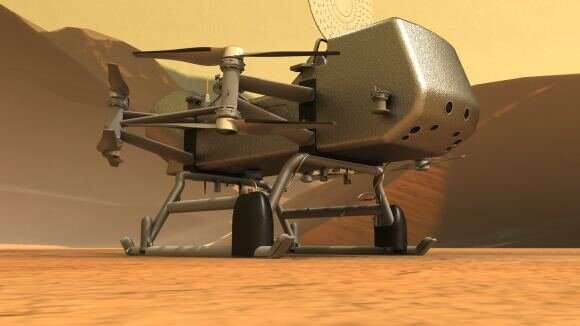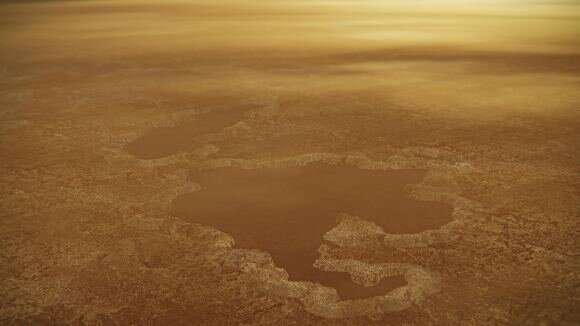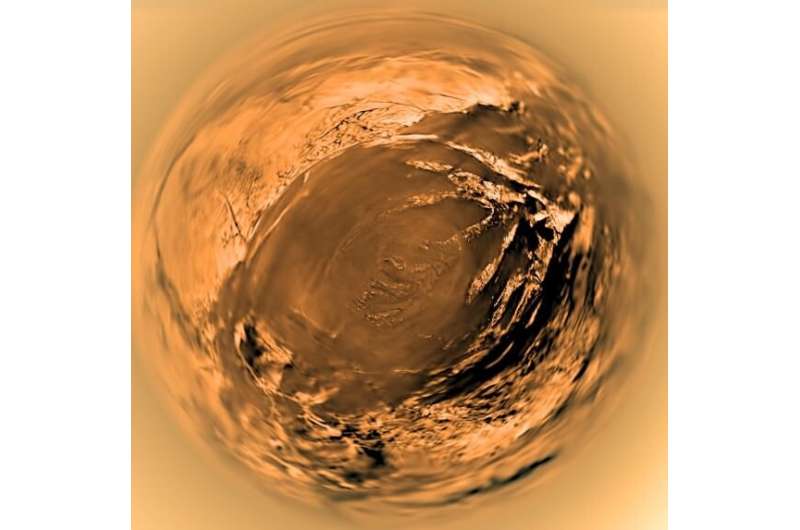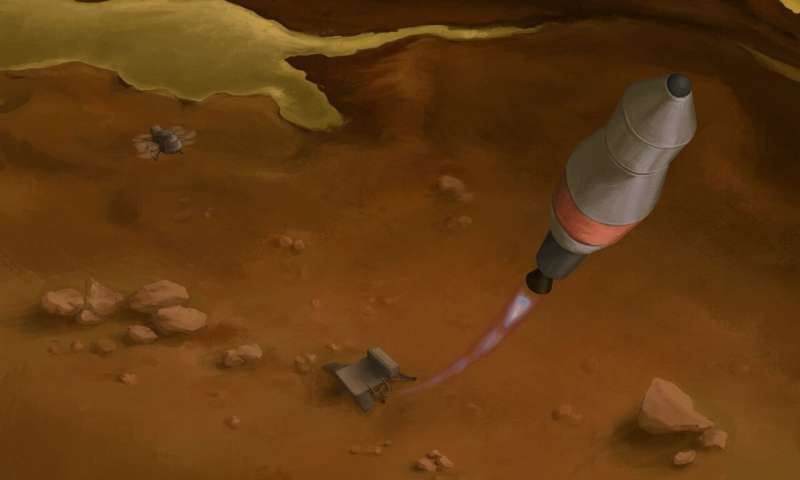The Dragonfly mission, which is scheduled to launch by 2027 (and arrive at Titan by 2036) will spend 2.7 years exploring Titan as part of its primary mission. In order to operate so far from home, it will rely on a Multi-Mission Radioisotope Thermoelectric Generator (MMRTG), where the heat caused by the slow radioactive decay of plutonium generates electricity.

Meanwhile, the sample-return concept would provide fuel for its return flight using volatile elements harvested from Titan's surface. As you can see from the illustration at the top, it would consist of a lander and an ascent vehicle. Once these set down on the surface of Titan, they could assist the Dragonfly mission by receiving samples collected by the quadcopter.
Using resources harvested in-situ, the lander could provide liquid methane and liquid oxygen fuel (created from the local ice) for the ascent vehicle. This vehicle would then be loaded up with samples collected by Dragonfly and then carry them back to Earth. By not transporting its own propellant, the sample-return element of the mission would have a lower overall mass and therefore would cost less to launch.
On top of that, the sample-return mission would exponentially increase the scientific returns of a Titan mission. For years, scientists have been hoping to get a better look at the moon's surface to investigate its particular mysteries. These include (but are not limited to) its dense nitrogen-rich atmosphere, its hydrological cycle (but with methane), and the rich organic chemistry and prebiotic conditions on its surface.
The concept was developed by a team led by Steven Oleson, the COMPASS Concurrent Spacecraft Design Team leader at NASA's Glenn Research Center. NASA described this concept, as part of the 2021 NIAC Phase I Fellows announcement, as follows:

"A Titan Sample Return Using In-Situ Propellants is a proposed Titan sample return mission using in-situ volatile propellants available on its surface. This approach for Titan is very different from all conventional in-situ resource utilization concepts, and will accomplish a return of great science value toward planetary science, astrobiology, and understanding the origin of life, that is an order of magnitude more difficult (in distance and ?V) than other sample return missions."
The concept is similar to the sample-return mission for Mars currently being developed by NASA and the European Space Agency (ESA) that would transport samples collected by the Perseverance rover. According to the current mission architecture, this sample-return will also consist of a lander and a two-stage solid-fueled ascent vehicle (developed by NASA) and a rover (developed by ESA) that would collect the samples.
This sample-return mission is scheduled to launch in July of 2026 and would land near the Perseverance rover (in the Jezero crater) by August 2028. The NIAC program, which is overseen by NASA's Space Technology Mission Directorate (STMD), seeks to engage American innovators and entrepreneurs to foster innovative concepts and breakthroughs that will help transform space exploration.
For 2021, STMD selected 16 NAIC proposals to become Phase I Fellows, each of which will receive a grant of up to $125,000 from NASA. Upon the successful completion of an initial nine-month feasibility study, the NIAC Fellows can apply for Phase II awards. As Jenn Gustetic, the director of early-stage innovations and partnerships within NASA STMD, explained in a recent NASA press release:

"NIAC Fellows are known to dream big, proposing technologies that may appear to border science fiction and are unlike research being funded by other agency programs. We don't expect them all to come to fruition but recognize that providing a small amount of seed-funding for early research could benefit NASA greatly in the long run."
This is merely one of several cutting-edge proposals that have been accepted for Phase I development, as part of NASA's NAIC program for 2021. While only a handful (or none at all) may be fully-realized and go to space in the coming years, the program is leading to inspired ideas that illustrate what the future of humanity in space will look like.



